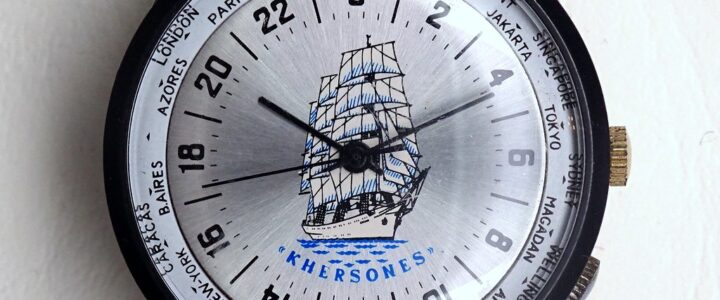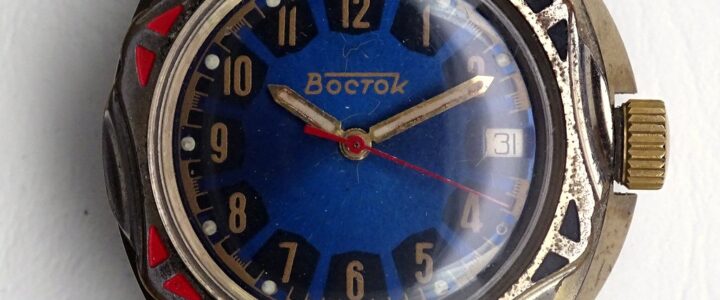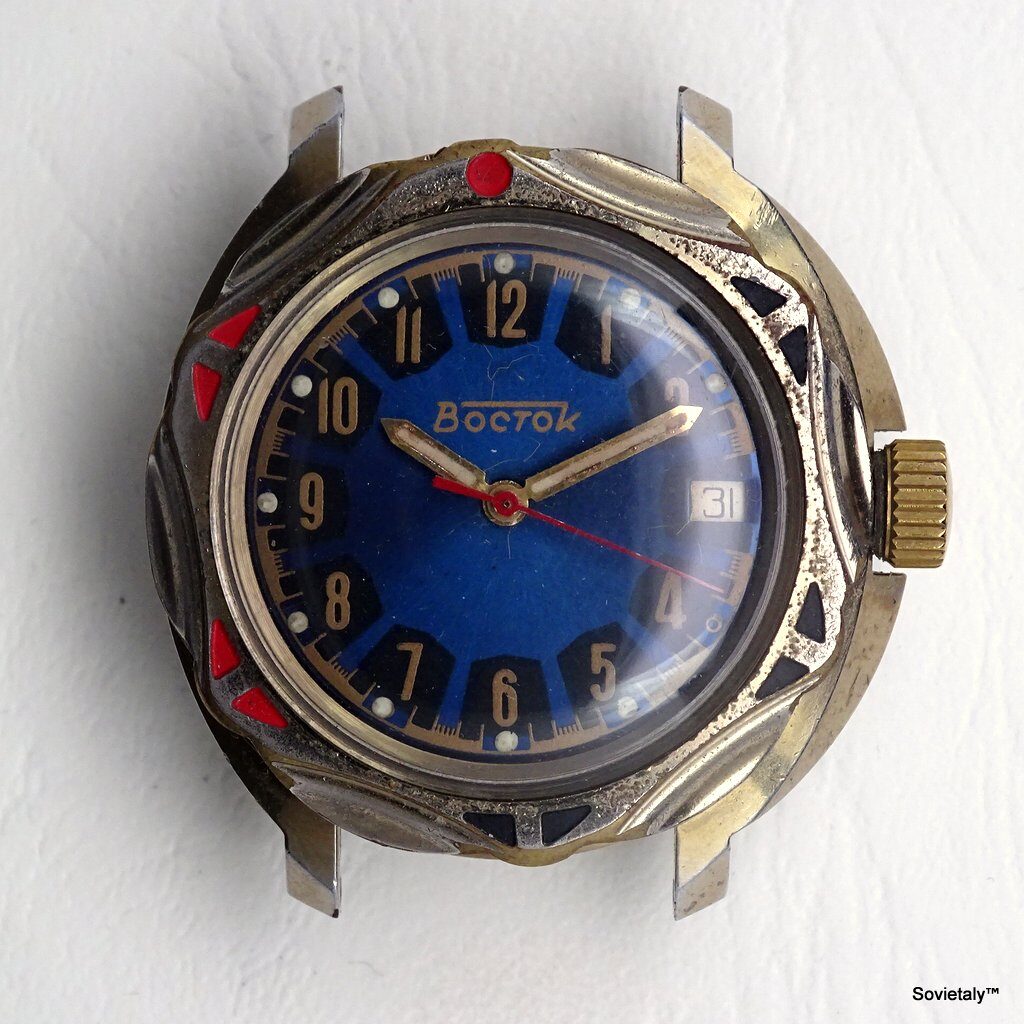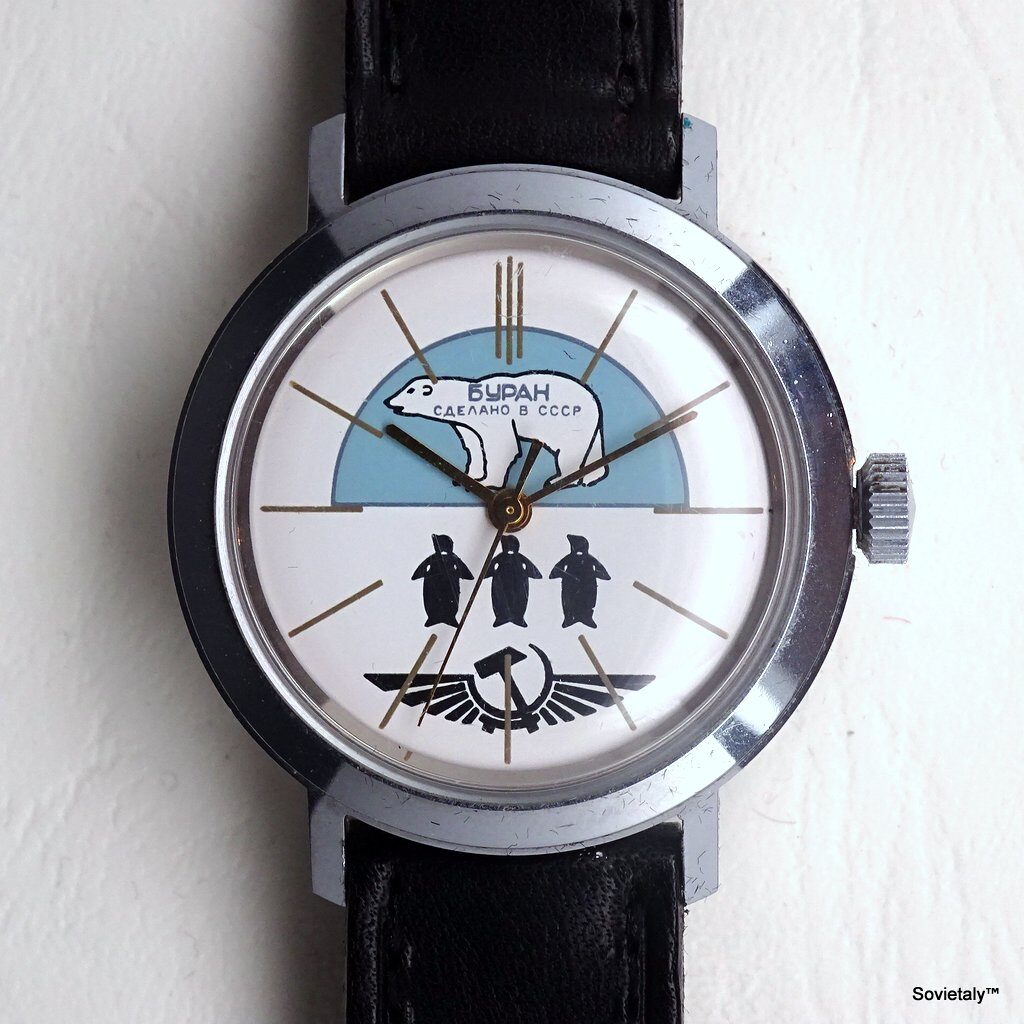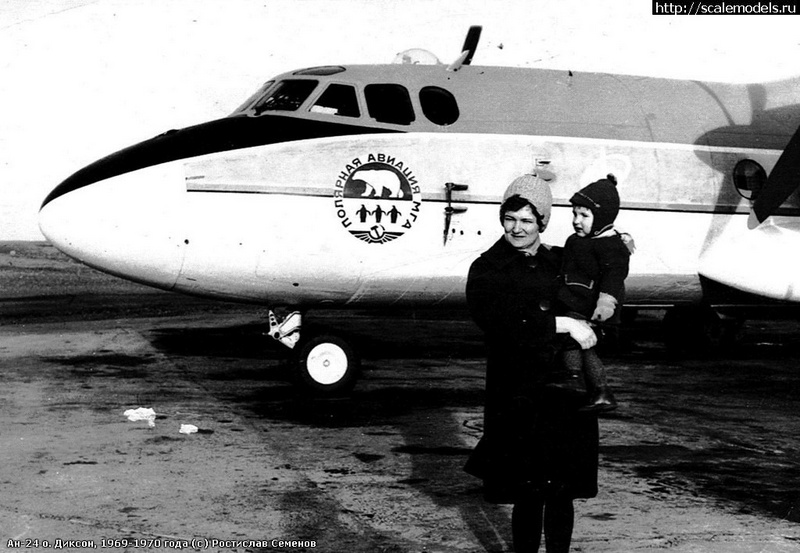The Raketa Khersones is a timepiece that truly embodies the spirit of seafaring and pays homage to one of Russia’s most celebrated training ships. Its nautical design immediately catches the eye: crisp whites, metallic and blue tones, an internal rotating bezel displaying city names in English, and at the centre, a detailed image of the Khersones sailing ship. The chromed case, black bezel and signature TiN (titanium nitride) finishing make this 24-hour model stand out, powered by the reliable Raketa 2623.H movement.
The Khersones Training Ship
The Khersones is a three-masted tall ship built in 1989 at the renowned Gdańsk shipyard in Poland, part of a distinguished series of six sister ships (the most famous being the Mir). It measures 108.6 metres in length, 14 metres across, and boasts a main mast height of nearly 50 metres. With a sail area of 2,771 m², the Khersones can achieve impressive speeds relying solely on wind power.
Designed for the training of cadets at the Black Sea State Academy of Navigation, Khersones has taken part in numerous international regattas, earning an excellent reputation among Russian training ships.
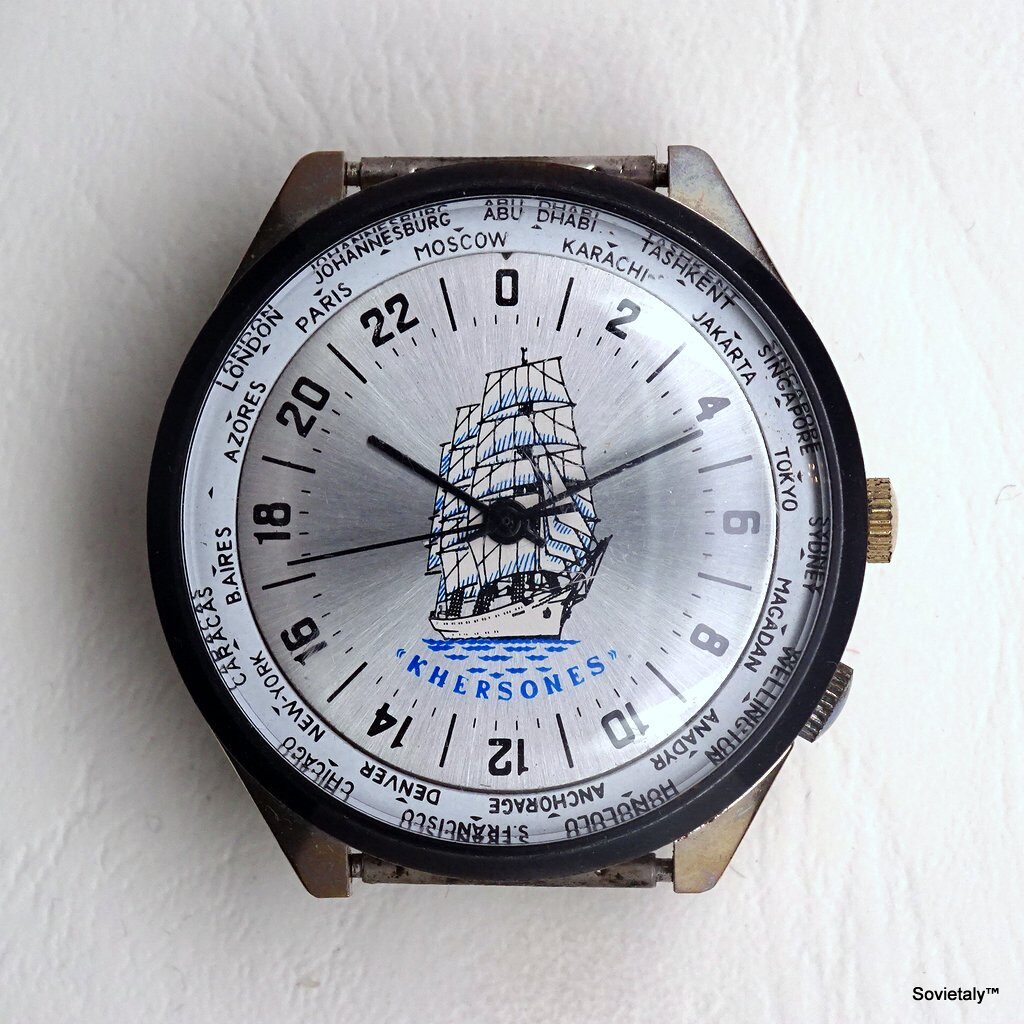
Historical Highlights and Curiosities
- Launch and early years: Launched in 1989, Khersones immediately set sail as a training vessel, standing out in major international regattas.
- World circumnavigation: Between 1997 and 1998, it completed a round-the-world voyage, visiting ports across five continents and acting as a floating ambassador for Russian seamanship.
- Film and media fame: The ship has appeared in several films and documentaries, cementing its status as a maritime icon well beyond the sailing world.
- Present day: Today, Khersones sails under the Russian flag, mainly seen in the Black Sea near Sevastopol, where it continues to serve as a training ship.
Would you like to track its current location? See it live on MarineTraffic.
Collecting the Raketa Khersones
Collecting watches such as the Raketa Khersones is a way to dive into the world of Soviet watchmaking and celebrate the legacy of historic sailing ships. Personally, I enjoy pairing these watches with related memorabilia—stamps, postcards, and pins featuring Khersones make any collection even more evocative.
Features of the Raketa Khersones Watch
- Dial: 24-hour, featuring an image of the Khersones
- Case: Typical Raketa 24h, with TiN finishing
- Bezel: Internal rotating, city names in English
- Movement: Raketa 2623.H 24h, sturdy and reliable
- Style: Distinctly nautical, with metallic and blue details
- Wearability: Perfect for fans of technical timepieces looking for something unique and original
Conclusion
The Raketa Khersones is more than a beautiful accessory; it is a true tribute to maritime history and the prestige of the Russian training ship. Owning this watch means appreciating both the art of navigation and the craftsmanship that makes every detail of this timepiece remarkable.

